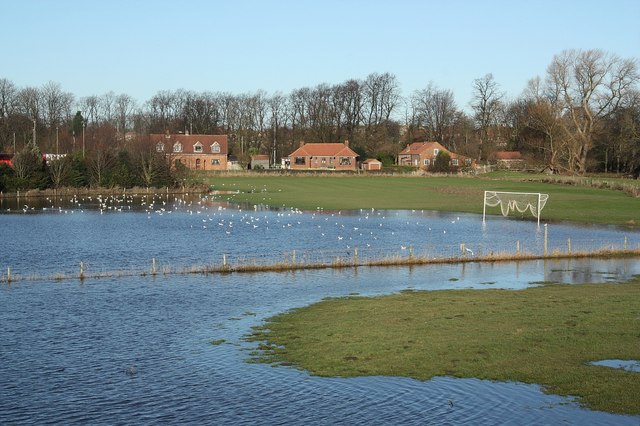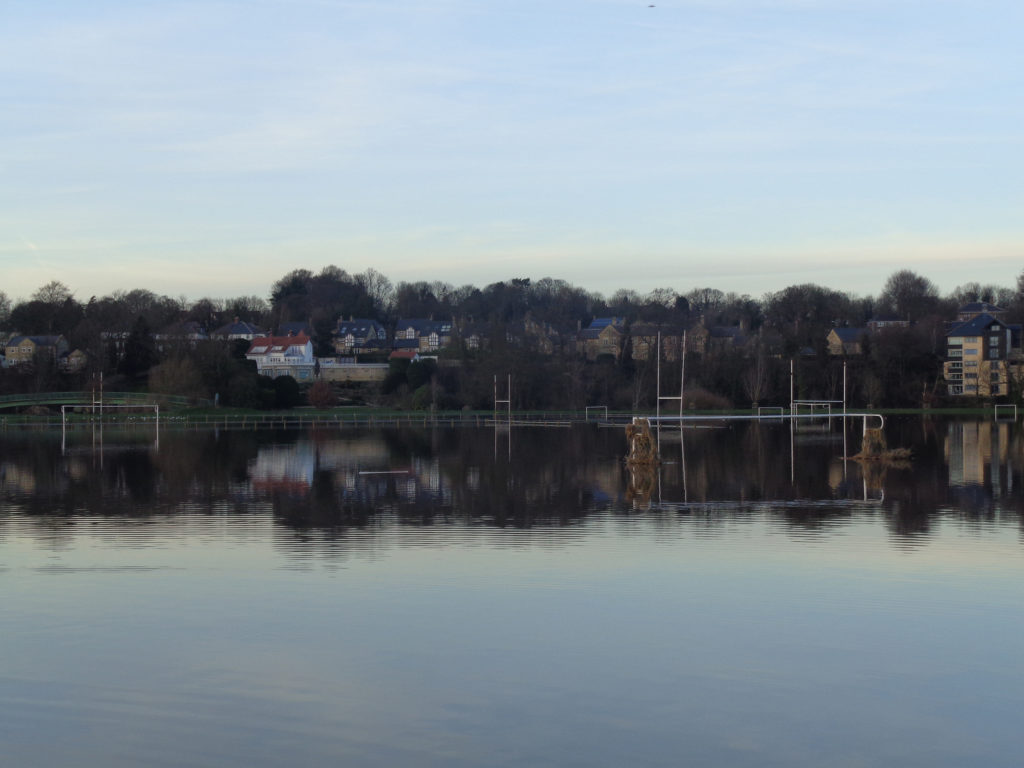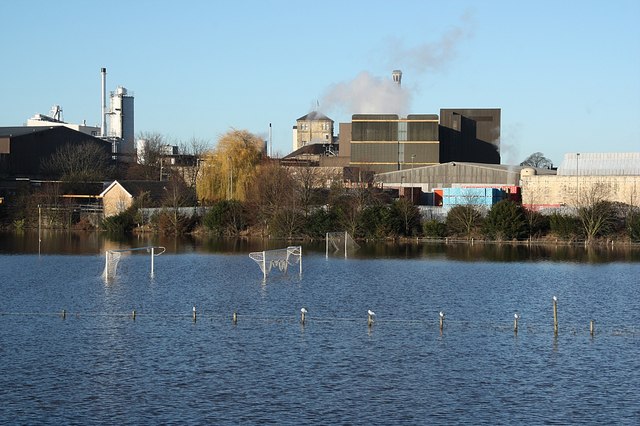Last Updated on: 11th October 2024, 02:52 pm
In the run-up to the 2019 General Election, grassroots football became a big talking point for many of the parties. Boris Johnson pledged that he was putting his “heart and soul” into a bid to host the 2030 World Cup. Part of this included a promise that every family would be an average of 15 minutes away from a high-quality pitch. The Prime Minister then went on to suggest that investment in grassroots football will be quadrupled over the next 10 years. He claimed it would go from £180 million to £730 million. Considering how much the government’s austerity cuts have affected local authority spending on sporting facilities, there is a sense that this is all coming rather too late in the day.

Tadcaster Ings, Dec 2009 By Richard croft at geograph.org.uk [CC BY-SA 2.0]
A crisis in grassroots football
Over the past decade or so, there has been a crisis in amateur football. As you will be all too aware, bad weather caused countless cancelled matches. In 2018, the Climate Coalition released a report that revealed, that at the lower league level, the average club was losing about 5 weeks every year because of adverse weather conditions. The report found that more than a third had lost 2 to 3 months of games.
According to Professor Piers Forster, director of the Priestly International Centre for Climate at the University of Leeds, the UK has seen 6 of the 7 wettest years on record since 2000. A figure that includes the record-breaking wet winters of 2015 and 2016. It’s clear that the recent extreme weather isn’t going anywhere soon. So, something needs to be done to keep football going.
Damaging the sport
There are already plenty of obstacles that an amateur football club needs to overcome to survive. The rising cost of facilities is one of the major factors they must contend with. When those facilities are causing games to be cancelled so frequently, it makes everything more difficult. There simply aren’t enough viable pitches for every team who wants to play.
Local leagues are all too aware of the dangers facing the sport. Last May, Leighton and District Sunday League warned the council that grassroots football would die out if they didn’t provide more pitches. It’s something that is being seen across the UK and something needs to be done to revitalise the game.
Cancelled matches have a massive impact on all players. If they aren’t getting to play a match for weeks at a time, their level of motivation will go down. It will affect the development and enjoyment of younger players and will make it difficult to find great talent for our national team. With so many games being cancelled, the game at the grassroots level will never be able to grow as it needs.

Wetherby Ings, Dec 2015 By Mtaylor848 [CC BY-SA 4.0] via Wikimedia Commons
Cry for help
This is by no means a new issue and the Conservative party’s promises are far from the first announcement about a boost to the game. The Premier League and Sport England made £750,000 available to the clubs that were affected by flooding in 2015 and 2016. The FA also have a long-term plan to invest $48 million in building all-weather pitches across the UK. But how much will that really do to help?
Chief Executive of the FA, Mark Bullingham agreed that facilities were the biggest concern for clubs. According to Bullingham, only 1 in 3 pitches is up to a reasonable standard. As a comparison, Germany has about 4 times as many artificial pitches as the UK. The FA have a clear idea of how many pitches each local authority requires and, at the current rate of investment, it would take 25 years to get them all. So, a boost in government funding would be a great thing. However, the money needs to be invested in the right places and in the right way.
Possible solutions
So, what can we do to ensure more games can go ahead? In an ideal world, the introduction of extra all-weather artificial pitches would be a great solution to this problem. However, what does that mean for all clubs? After all, the price of hiring a 4G pitch is relatively expensive. Even if they built all of the pitches, what would it mean for clubs that have a tight budget? Then there’s the fact that these pitches need to be built properly and have decent drainage. So, it’s not a clear-cut solution.
There is also the question of the Premier League: is it doing enough to help grassroots football? In 1992, it pledged to put 5% of television revenue back into the grassroots game. Football at the top levels is becoming more lucrative every season and there are many questions about whether the Premier League are honouring their promise. As more money comes in and goes out of the Premier League, should they be doing more to help keep amateur football alive?
Or is the answer to the bad weather question simply to rethink the football season? Many regularly raise this question but is it the answer? Would it help grow the game if the season kicked off earlier in the year? Or would it help to have a winter break? We’ve seen that extreme weather conditions are hitting us at various points through the year so there isn’t necessarily evidence to back it up. However, it might mean that more clubs could play more of their games.

Tadcaster Ings, Dec 2009 By Richard croft at geograph.org.uk [CC BY-SA 2.0], via Wikimedia Commons
What do you think?
Do you have any thoughts about what needs to be done about the cancellations of so many games? Let us know.
It’s a debate that will keep raging for a while and there isn’t an easy answer. So, in the meantime, don’t forget to stay prepared for all weathers. Check out our range of football rain jackets and football winter jackets so you can carry on playing the game you love all year round. Don’t let a bit of rain stop you by browsing our great range of training wear.

